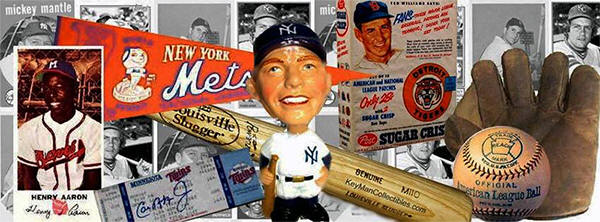| |
Rawlings No. SCP Pro-Model Catchers
Body Protector features fine water
repellent tan color 9 oz. Army duck.
Cross stitched to form parallel ribs
firmly stuffed with kapok, leather
bound. Comes well up over shoulders and
fits body perfectly. Adjustable back
and body straps. Will resist the
hardest blow. Along with the Rawlings
manufacture markings on the backside
has the "Special Services U.S. Army"
stamping, which ties it to the WWII
"Baseball Equipment Fund"
With the onset of the U.S. involvement in WWI in 1917, Washington Senators
owner Clark Griffith launched a plan to
support our troops by raising money to
purchase athletic equipment, mainly
baseball gear, to outfit every U.S.
military training camp. Baseball was
considered essential to morale. The
Y.M.C.A. shipped 144,000 bats and
79,680 balls to the troops overseas
with the money raised by Griffith.
Since its inception in 1933, All-Star
game profits were funneled to a relief
fund benefiting retired indigent
ballplayers. In 1941, the profits were
sent to the USO, to buy athletic
equipment for servicemen. Four days
after the Japanese bombed Pearl Harbor,
baseball executives established the
WWII version of the Bat & Ball Fund,
renamed the "Baseball Equipment Fund"
Once again Clark Griffith took charge
along with National League President
Ford Frick.
With $25,000 raised by Major League
baseball, contributions by the writers
association of America, and all the
proceeded generated by the 1942
All-Star game Clark Griffith contacted
several Sporting Goods companies.
Griffith obtained a discounted price
for equipment from Louisville Slugger,
Goldsmith, Spalding and the Wilson
Sporting Goods Companies.
The first order was for 18,000
baseballs and 4,500 bats. The equipment
was to be distributed among military
camps at the discretion of the joint
Army and Navy Committee on welfare and
Recreation. There were two types of
Kits put together during WWII. Kit-A
included a dozen baseballs and three
bats; Kit-B contained the catchers
gear, a mitt, mask, chest protector and
shin guards. It was reported by the
Sporting News that 6,000 kits were
shipped over seas, but 35 kits were
lost at sea as a result of a submarine
attack.
|
|


